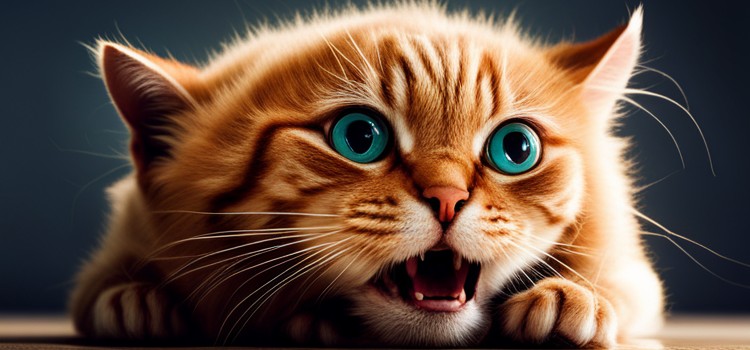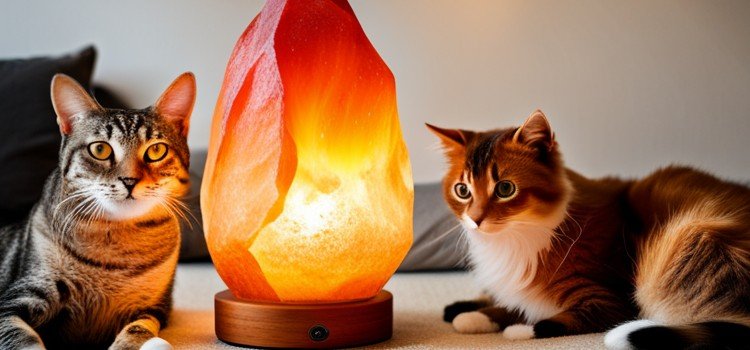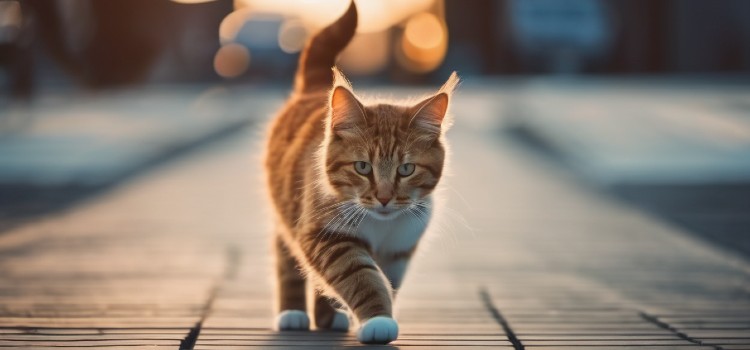As an Amazon Associate committed to the mission of improving the lives of our readers, Live-Clear.com receives a small commission from eligible purchases made through our affiliate links. This revenue enables us to keep producing insightful articles and other material.
Yes, declawed cats can catch mice. However, since declawing removes their primary means of defense and hunting, it may be more challenging for them to catch mice compared to cats with their claws intact.
As a responsible pet owner, you may wonder about the hunting abilities of declawed cats. Many people believe that declawed cats cannot catch mice due to the removal of their claws. However, the reality is that declawed cats can still catch mice, although it may be more challenging for them.
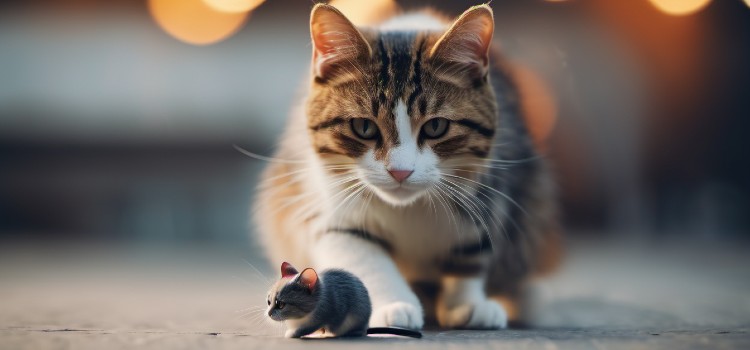
Declawing removes a cat’s primary means of defense and hunting, making it harder for them to catch mice compared to cats with their claws intact. We will explore whether declawed cats can catch mice, and how their hunting abilities may be affected by the declawing procedure.
Understanding Declawing And Its Effects
Declawing is a controversial procedure that involves removing a cat’s claws, often for the convenience of the owner rather than the benefit of the cat. Understanding the process of declawing and its effects is crucial in determining how this procedure can impact a cat’s natural behaviors, such as hunting.
The Process Of Declawing
During the declawing procedure, the veterinarian typically removes the last bone of each toe to prevent the claws from regrowing. This can be done using a scalpel, clippers, or a laser, and may result in significant pain and discomfort for the cat.
Consequences Of Declawing On Cats’ Instincts
Declawing can have profound effects on a cat’s natural instincts, including their ability to hunt and catch mice. The act of declawing not only removes a cat’s primary defense mechanism but also affects their balance and agility, making it more challenging for them to engage in activities such as stalking and pouncing on prey. As a result, declawed cats may struggle to effectively catch mice and other small rodents, impacting their natural hunting behaviors.
The Natural Hunting Instinct Of Cats
Cats are natural hunters, possessing an innate instinct to stalk, chase, and capture prey. This instinct is deeply ingrained in their behavior and has been honed through centuries of evolution. Even domesticated cats retain this primal hunting drive, which is evident in their playful pouncing and hunting behaviors.
Exploring Cats’ Innate Behavior
Cats are skilled hunters, leveraging their keen senses of sight, hearing, and smell to track and pursue prey. Their hunting instincts are driven by both their predatory nature and a need to fulfill their hunting instincts. This instinctual behavior is not solely reliant on the presence of claws, as cats possess a range of hunting strategies beyond just their physical abilities.
The Role Of Claws In Cats’ Hunting Abilities
Claws play a significant role in a cat’s hunting prowess, aiding in the capture and immobilization of prey. They are essential tools for climbing, grasping, and maintaining balance during hunting pursuits. However, while claws are an integral part of a cat’s hunting arsenal, declawed cats can still exhibit hunting behaviors and may engage in catching mice, albeit with modified tactics.

Methods Of Declawed Cats Catch Mice
Types Of Hunting Techniques
When it comes to catching mice, declawed cats may resort to various hunting techniques to make up for the lack of their claws. These techniques include:
- Stalking and Ambush: Declawed cats use their agility and speed to stealthily stalk and pounce on unsuspecting mice.
- Chasing and Snatching: Despite the absence of claws, declawed cats may still utilize their speed and dexterity to chase and snatch mice with their mouths.
- Baiting: Some declawed cats may resort to luring mice using body language and enticing movements to catch them without relying on their claws.
The Importance Of Claws In Hunting Small Prey
Claws play a crucial role in a cat’s ability to hunt and catch small prey like mice. They provide traction, grip, and precision necessary for capturing and holding onto fast-moving targets. Without claws, a cat’s ability to catch mice may be compromised, requiring them to rely on their other physical attributes and instincts.
Impact Of Declawing On Cats’ Hunting Abilities
Declawing is a controversial procedure that involves the amputation of a cat’s claws. While some cat owners may opt for declawing to prevent damage to furniture or for safety reasons, it’s important to consider the potential impact on the cat’s natural behaviors, including hunting. This raises the question: can declawed cats catch mice?
How Declawing Affects Cats’ Ability To Catch Mice
Declawing significantly impairs a cat’s ability to catch mice and engage in natural hunting behaviors. Claws are essential for a cat’s hunting prowess, as they use them to grasp and hold onto prey, as well as for balance and agility. Without claws, declawed cats lose their primary means of defense and offense in hunting. The removal of the claws can also lead to chronic pain and discomfort, further reducing a cat’s motivation and ability to hunt effectively.
Compensating For The Lack Of Claws In Cats
While declawed cats are disadvantaged in their hunting abilities, they may still attempt to catch mice by relying on other senses and strategies. For example, they may use their heightened sense of smell and hearing to detect mice, and rely on pouncing and stalking techniques to compensate for the absence of claws. However, these compensatory mechanisms are often less effective than the natural hunting behaviors exhibited by cats with intact claws.
Training Declawed Cats To Hunt Mice
Many cat owners wonder if declawed cats can catch mice, especially considering that declawing can impact a cat’s hunting abilities. Despite this, it is possible to train declawed cats to hunt mice using various techniques and strategies. While declawed cats may not be as effective in hunting due to the lack of claws, with the right approach and patience, they can still develop hunting skills and potentially catch mice.
Techniques For Training Declawed Cats
Training declawed cats to hunt mice requires patience and persistence. The following techniques can help in this training process:
- Using toys and simulated prey to stimulate the cat’s hunting instincts.
- Creating an outdoor enclosure to allow the cat to observe and track potential prey.
- Encouraging natural hunting behavior using interactive play sessions and treats.
- Introducing scent trails and hiding food to engage the cat’s sense of smell and natural hunting instincts.
Success Stories Of Declawed Cats Catching Mice
Although declawed cats may face certain limitations in hunting, there have been instances of declawed cats successfully catching mice. These success stories serve as inspiring examples of declawed cats overcoming obstacles to exhibit their hunting instincts and abilities.
One such story tells of a declawed cat who, through patient training and encouragement from its owner, developed the skills to catch mice and other small prey, proving that even declawed cats can learn to hunt and exhibit natural hunting behaviors. Such success stories demonstrate the potential for declawed cats to tap into their innate hunting instincts with the right support and training.
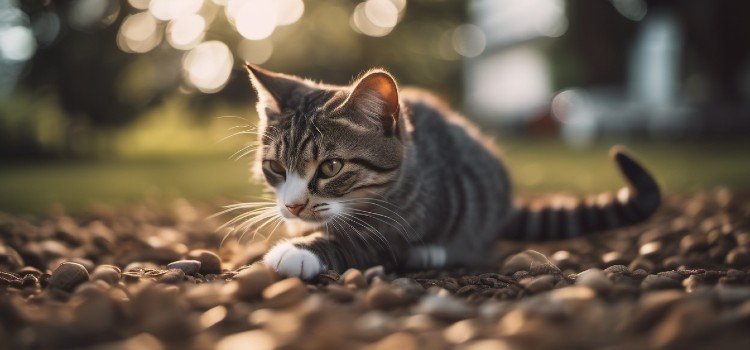
Ethical Considerations And Alternatives For Declawed Cats Catch Mice
When discussing the ethical considerations and alternatives to declawing cats, it’s crucial to address the controversy surrounding this practice and explore alternative methods for managing cats’ hunting behavior. Declawing is a hotly contested issue, raising questions about the well-being of the feline, the impact on their natural behavior, and potential alternatives that can achieve similar results without the ethical concerns associated with declawing.
The Controversy Surrounding Declawing
Declawing, known as onychectomy, involves the surgical removal of a cat’s claws and is a highly controversial practice. While some owners may see it as a way to protect furniture and prevent scratching, animal welfare organizations and veterinarians often oppose declawing due to its impact on a cat’s physical and psychological well-being. The procedure can lead to long-term pain, behavior changes, and potential complications. As such, it’s essential to explore alternative methods for managing a cat’s hunting behavior without resorting to declawing.
Alternative Methods For Managing Cats’ Hunting Behavior
When it comes to managing a cat’s hunting behavior without declawing, there are several humane and effective options to consider. It’s important to address a cat’s natural instincts while also respecting their well-being and the environment. Some alternative methods include:
- Interactive Play: Engaging in interactive play with toys that mimic hunting activities can help satisfy a cat’s hunting instincts and provide an outlet for their energy.
- Environmental Enrichment: Creating an enriched environment with climbing structures, perches, and puzzle feeders can offer mental stimulation and opportunities for natural hunting behaviors.
- Positive Reinforcement Training: Using positive reinforcement techniques to redirect a cat’s behavior and encourage appropriate scratching and hunting activities.
- Supervised Outdoor Exploration: Allowing supervised outdoor exploration in a secure space can give a cat the chance to satisfy their natural instincts without endangering wildlife.
- Scratching Alternatives: Providing appropriate scratching posts and pads can encourage cats to engage in natural scratching behaviors without causing damage to furniture.
Expert Insights And Recommendations For Declawed Cats Catch Mice
Advice From Veterinarians And Animal Behaviorists
When it comes to the question of whether declawed cats are still able to catch mice, veterinarians and animal behaviorists offer valuable insights. While declawing can impair a cat’s natural hunting ability, it does not necessarily mean they are unable to catch mice. However, it’s important to consider the potential impact declawing can have on a cat’s physical and mental well-being. Veterinary professionals stress the significance of offering suitable enrichment and stimulation for declawed cats. This helps maintain their hunting instincts and contributes to their overall health.
Balancing Cats’ Welfare With Pest Control Needs
When considering the balance between a cat’s welfare and the need for pest control, it’s crucial to prioritize the well-being of the animal. Veterinarians and animal behaviorists recommend alternative methods for managing pest issues without relying solely on declawed cats. To address mouse infestations without affecting a cat’s natural behaviors and comfort, it’s effective to implement humane pest control measures. These may include sealing entry points and using deterrents. Finding a balance that respects both the cat’s welfare and the need for pest control is essential for creating a harmonious living environment.

Conclusion
Declawed cats can still catch mice due to their predatory instincts and agility. While declawing may affect their hunting abilities, it doesn’t eliminate them. It’s important to provide enrichment and mental stimulation to compensate for the loss of their claws. Providing interactive toys and playtime can help satisfy their natural hunting instincts. Additionally, incorporating puzzle feeders or hiding treats around the house can engage their problem-solving skills and keep them mentally stimulated.
Frequently Asked Questions Of Can Declawed Cats Catch Mice
Yes, cats naturally catch mice. Their hunting instinct and agility make them effective mouse hunters.
Declawing a cat can cause pain, behavioral issues, and difficulty walking. It may lead to long-term complications and affect the cat’s natural instincts. Avoid declawing and explore alternatives to maintain your cat’s well-being.
No, declawed cats cannot survive in the wild due to their inability to defend themselves and hunt for food. Declawing removes the cat’s primary means of protection and survival, making them vulnerable to predators and unable to catch prey.
If your cat catches a mouse, keep it away to prevent injury and disease transmission. Dispose of the mouse safely. Consider seeking advice from a veterinarian on preventative measures against parasites. Keep your cat’s vaccinations and deworming treatments up to date.
Declawed cats can still catch mice using their hunting instincts and agility. However, they may face more difficulty catching prey without their claws.
Declawed cats can still catch mice due to their predatory instincts and agility. Although declawing may affect their hunting abilities, it doesn’t eliminate them. It is worth noting that declawing can also lead to behavioral issues such as aggression or litter box problems. It is important to consider alternative options, such as regular nail trimming or using scratching posts. These measures contribute to the overall well-being of the cat. Ultimately, declawed cats can still be effective hunters with proper care and attention.
Amazon and the Amazon logo are trademarks of Amazon.com, Inc, or its affiliates.

